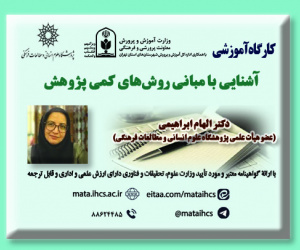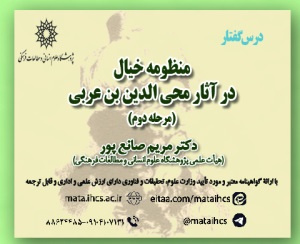مدلسازی توسعه ظرفیت جذب دانش در شتاب دهنده های استارتاپ با رویکرد ساختاری-تفسیری (مقاله علمی وزارت علوم)
درجه علمی: نشریه علمی (وزارت علوم)
آرشیو
چکیده
موفقیت شتاب دهنده ها مستلزم رشد و بهبود مستمر ظرفیت جذب دانش از منابع درون و برون سازمانی است. در همین راستا پژوهش حاضر با هدف مدلسازی توسعه ظرفیت جذب دانش در شتاب دهنده های استارتاپ انجام گرفت. این پژوهش براساس هدف یک مطالعه کاربردی-توسعه ای است و براساس روش گردآوری داده ها یک مطالعه غیرآزمایشی (توصیفی) از نوع پیمایش مقطعی می باشد. همچنین در این مطالعه از روش پژوهش آمیخته (کیفی-کمی) استفاده شد. ابزار گردآوری داده ها در بخش کیفی، مصاحبه نیمه ساختاریافته و در بخش کمی پرسشنامه ISM بود. برای اعتبارسنجی بخش کیفی از ضریب هولستی استفاده شد. جامعه مورد مطالعه این پژوهش، شامل مدیران شتاب دهنده های استارتاپ است که با روش نمونه گیری هدفمند انتخاب شدند و با 15 مصاحبه به اشباع نظری دست پیدا شد. برای تحلیل داده ها در بخش کیفی از روش تحلیل کیفی مضمون و نرم افزار Nvivo استفاده شد. سپس با استفاده از روش مدلسازی ساختاری-تفسیری به ارائه مدل پژوهش پرداخته شد. . در آخر با استفاده از تحلیل MICMACنوع متغیرها با توجه به اثرگذاری و تاثیر پذیری بر سایر متغیرها مشخص شده است، یافته های پژوهشی نشان داد توانمندی منابع انسانی تاثیرگذارترین مولفه می بشاد و در سطح 4 قرار گرفته است در نتیجه برای هرگونه برنامه و اقدام برای ارتقای ظرفیت جذب دانش در شتاب دهنده ها باید به نقش کلیدی و پایه ای این عامل توجه شود. این مولفه در ارتقای طرفیت جذب دانش در شتاب دهنده ها دارای قدرت نفوذ بالا و وابستگی پایینی می باشد و جزء اولویت های اقدام در توسعه جذب دانش در شتاب دهنده های استارتاپ می باشد.Modeling the development of knowledge absorptive capacity in startup accelerators with a interpretive structural approach
The success of accelerators requires continuous growth and improvement of the capacity to absorb knowledge from internal and external organizational resources. In this regard, the present study is aimed to design a model for improving the capacity of knowledge absorption in startup accelerators. This study is an applied-developmental design in terms of purpose, and non-experimental (descriptive) in terms of data collection and a cross-sectional study. Also, in this study, a mixed research method (qualitative-quantitative) is used. The data collection measure in the qualitative section is semi-structured interview, and in the quantitative section, ISM questionnaire is used. The Holsti coefficient is used to validate the qualitative section, The statistical population includes the managers of startup accelerators who are selected by the purposeful sampling method and theoretical saturation was achieved with 15 interviews. Thematic analysis method and Nvivo software were used for data analysis in the qualitative. Then, using the interpretive- structural modeling method, the research model was presented. Finally, using MICMAC analysis, the type of variables has been identified based on their influence and susceptibility to other variables. The research findings showed that the human rsources emmpowerment is the most influential components and is placed at level 4. Therefore, any program or action to enhance knowledge absorption capacity in accelerators should focus on the key and fundamental role of this factor. This components have high penetration power and low dependence in enhancing knowledge absorption capacity in accelerators and is among the priorities for action in improving knowledge absorption in startup accelerators






